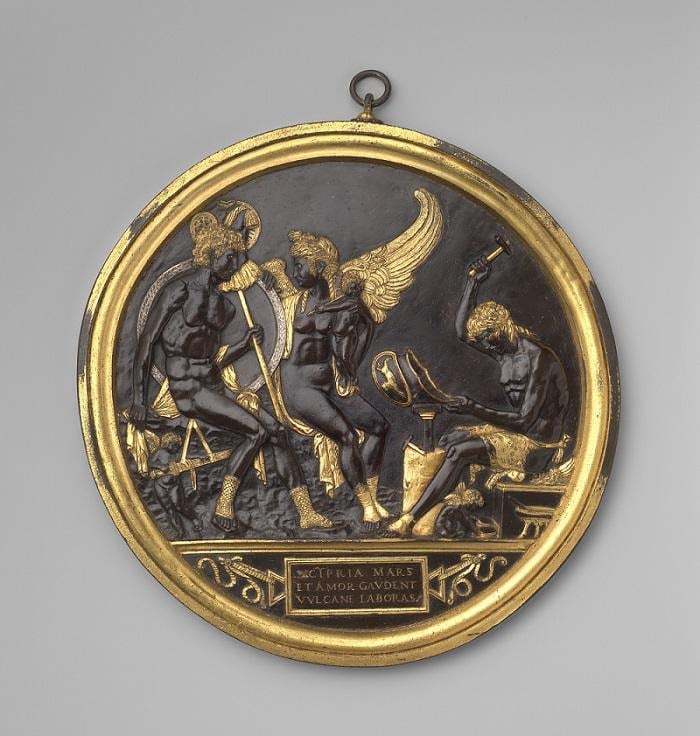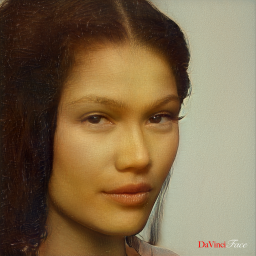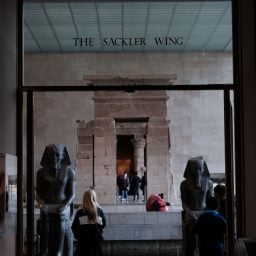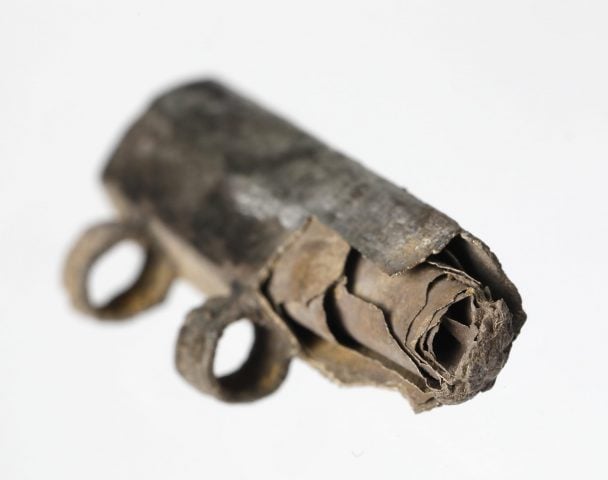The Metropolitan Museum of Art in New York has acquired a $23 million bronze roundel, the institution announced today. The piece, purchased from Daniel Katz Gallery in London, represents the second most expensive acquisition in the institution’s 152-year history.
Created around 1500 by the Italian goldsmith, sculptor, and print engraver Gian Marco Cavalli, the piece is “one of the most technically sophisticated examples of a bronze roundel known from the early Renaissance,” according to the museum’s announcement. It depicts Mars, the god of war, staring at Venus, the goddess of love, while the latter’s husband, Vulcan, fashions a helmet.
“Venus Mars and Love rejoice. Vulcan, you labor!” reads a Latin inscription at the bottom.
In a statement, Met director Max Hollein called the piece “an absolute masterpiece,” noting that it stands apart for “its historical significance, artistic virtuosity, and unique composition.”
“It is a truly transformational acquisition for the Met’s collection of Italian Renaissance sculpture,” he added.
The relief, adorned with gilding and silver inlay, has been on the institution’s wish list for a long time, it turns out. In 2003, a former curator of European sculpture, James David Draper, attempted to acquire it at a Christie’s auction in London, calling it “the most thrilling Renaissance bronze to appear on the market in ages.” But he was ultimately outbid by Sheikh Saud al-Thani, a Qatari prince who once served as his country’s minister of culture, arts, and heritage. The hammer price was over £7 million.
However, the Victoria and Albert (V&A) Museum’s keeper of sculpture at the time advised the state not to grant an export license for the artwork, arguing that it was too culturally significant to leave the country.
The U.K. government’s Reviewing Committee barred the roundel’s export, and the V&A was given the opportunity to raise the £7 million required to keep the piece in the country. By the time the museum did so, Sheikh al-Thani had withdrawn his application for an export license. The roundel, therefore, remained in the U.K., but still belonged to the Sheik.
Sheikh al-Thani died in 2014 and the artwork was sold to an anonymous buyer five years later. In 2021, U.K. museums, including the V&A, were once again given an opportunity to raise the funds necessary to keep the piece—then priced at £17 million—but no institution stepped up. “We currently have no plans to acquire [the roundel],” the V&A told the Art Newspaper at the time, citing budget cuts related to the Covid-19 crisis.
In stepped the Met, which had similarly straitened its acquisition budget since the onset of the pandemic, but happened to have a pool of money set aside for this particular artwork.
When Draper passed away in 2019, he left an “extraordinary bequest” to the Met, the place he had worked for 45 years. It was largely through this gift that the museum purchased the Cavalli, finally fulfilling the late curator’s dream.
Until the discovery of the roundel in 2003, Cavalli was best known as a collaborator of fellow artists Andrea Mantegna and Antico, who worked for the Gonzaga court in Northern Italy. Experts believe Cavalli created the piece for Isabella d’Este, the Marchioness of Mantua and a major patron of the arts.
“The Mantuan roundel’s sumptuous gilding, meticulously inlaid silvering, and masterfully varied chasing identify the roundel as a masterpiece in which Cavalli expressed his superlative abilities as a goldsmith and sculptor,” said Denise Allen, curator in the department of European sculpture and decorative arts.








